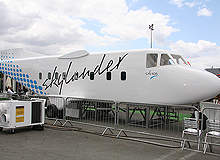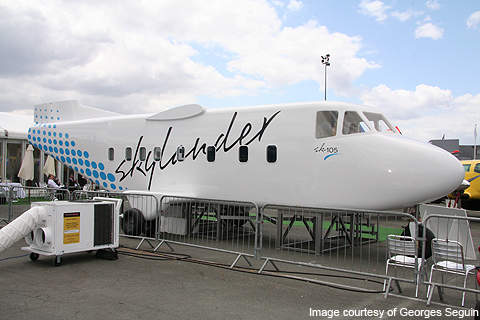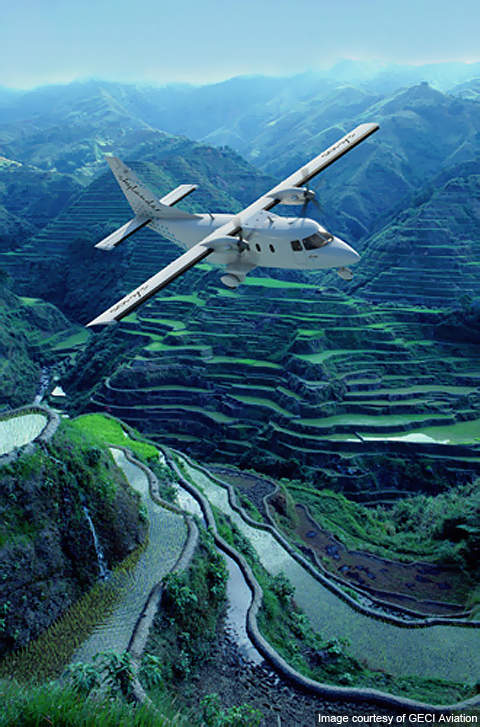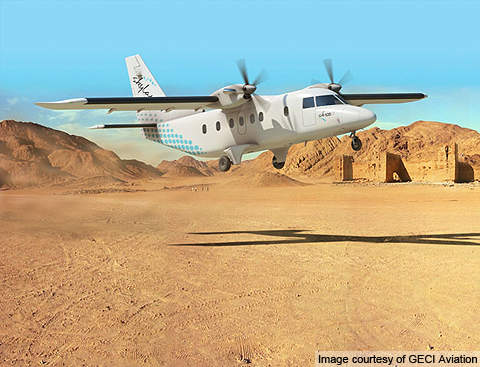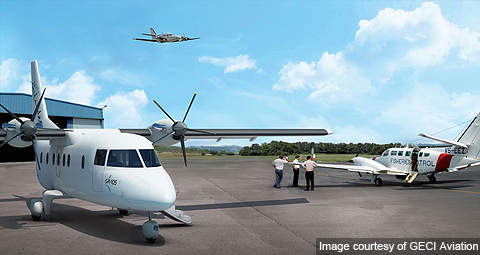The SK-105 Skylander is a twin-engine light utility aircraft being designed and manufactured by GECI Aviation of France. The aircraft can execute both civil and military missions including passenger and freight transport, maritime patrolling, parachute drops, medical evacuation, humanitarian, pilot training and liaison.
It can take-off and land from unpaved airfields and short runways even in the worst climatic conditions.
GECI Aviation awarded a contract to Beaver Aerospace and Defence on 27 June 2011 to provide electromechanical flap actuation systems for the Skylander.
Cobham Commercial Systems was contracted on 22 June 2011 to supply an integrated avionics suite for SK-105.
Supporting safety products will be incorporated in the Cobham avionics suite by L-3 Aviation Product Group.
The maiden flight of the SK-105 is scheduled for 2012. Certification and service entry is expected in 2013.
Orders and deliveries of France’s SK-105 Skylander
ACT Airlines ordered 17 SK-105s for delivery between 2013 and 2021.
Other customer orders include: Trans Air (eight plus four optional), Kan Airlines (two plus three optional), PT Sky Aviation (ten plus ten optional), Phongsavanh Airlines (two plus three optional) and UAE Defence (ten cargo versions).
Aircalin is also planning to acquire SK-105 provided the French Government grants approval.
Design and development of the aircraft
The design of the SK-105 was supervised by Desmond Norman. The final design was unveiled in October 2009.
The development of the aircraft began in June 2010 at Chambley Air Base in the Lorraine region of France.
Four SK-105 prototypes will be built with ground and flight tests planned in 2011.
A study on Skylander fitted with float type landing gear was commenced in March 2011. The SK-105 float version was designed to carry out surveillance missions in the Asia-Pacific, Indonesia, Vietnam, the Maldives, Canada and Alaska. It is anticipated to enter service in 2015.
GECI Aviation is also planning to launch a VIP version in 2014. It may produce and market 1,500 Skylanders between 2013 and 2030.
Flight deck
The Skylander will feature an all digital glass cockpit which can accommodate two crew members. It is equipped with synthetic vision flight displays, flight management system, audio or radio management system, communication and navigation radios.
Other avionics installed will include digital autopilot with three dimensional autoflight capability, automated stall speed protection, global positioning system and distance measuring equipment.
Cabin
The spacious cabin of the Skylander will measure approximately 1.91m wide and 1.83m high. It will accommodate a maximum of 19 passengers or 2,700kg of freight. The total volume of the cabin will be 28m3. The baggage compartment (5.3m3) will be located at the rear side of the cabin for placing the luggage of the passengers.
The cabin can be set up to carry cargo pallets or bulk cargo when deployed as freighter version. The aircraft can be easily reconfigured to carry a patient or stretcher on the right side of the cabin by removing the rear seat when operating as aerial ambulance.
Engines, power and propulsion
The SK-105 is powered by two Pratt and Whitney PT6A-65B turboprop engines rated at 820kW of output power each.
It is also fitted with two five bladed Hartzell HC-B5MP-3F/M11276NS constant speed reversible pitch propellers on either side of the wings.
Each propeller can rotate at the rate of 1,700rpm.
An epicyclic speed diminution gearbox optimises the output speed to increase the power and minimise the propeller noise.
The engine also houses a multistage axial and a single-stage centrifugal compressor, a reverse flow combustor and a single-stage compressor turbine.
The engine is 1.87m long and 0.55m high. Its diameter is 0.48m.
Performance of the SK-105 Skylander
The SK-105 can fly at a maximum speed of 435km/h. The cruise speed is 333km/h. The range and service ceiling of the aircraft are 1,556km and 7,620m respectively. The aircraft can fly for a maximum of nine hours.
The aircraft can operate at altitude as high as 10,000ft in Nepal. It can sustain itself in temperatures as high as +500 C and as low as -400C.

